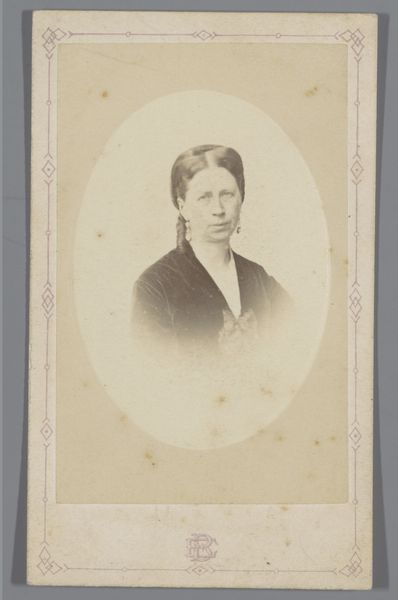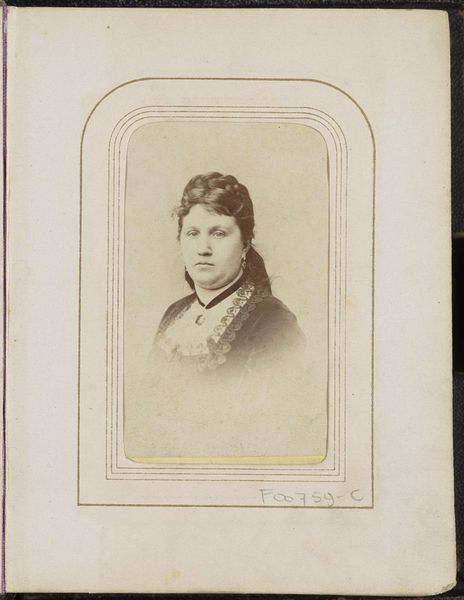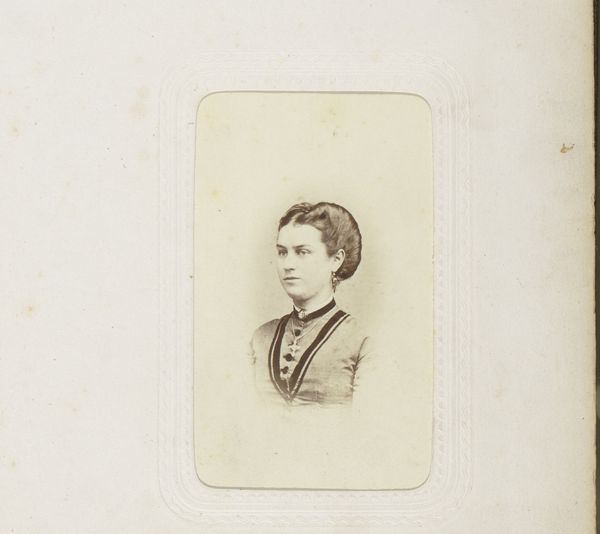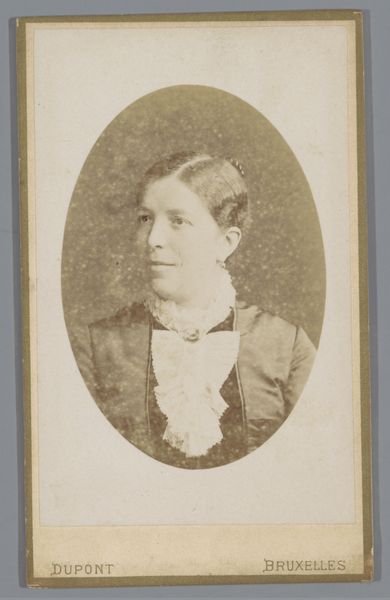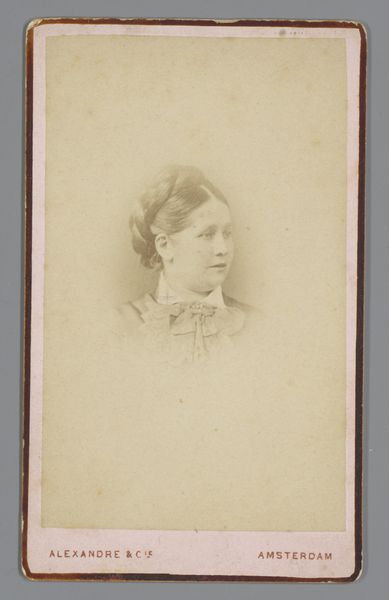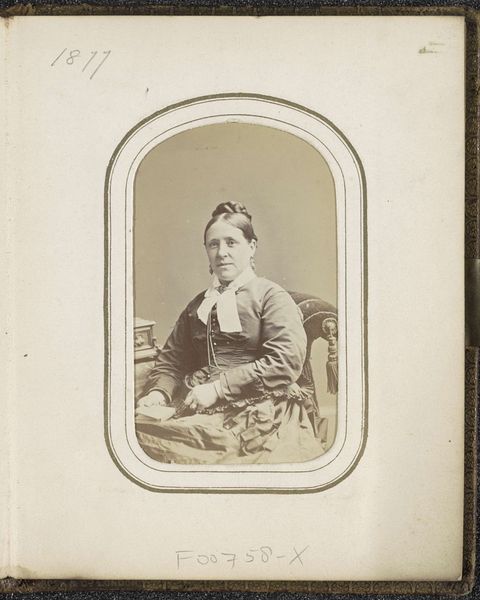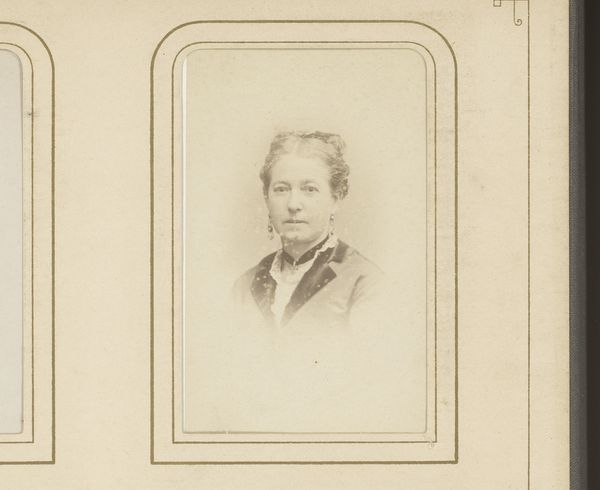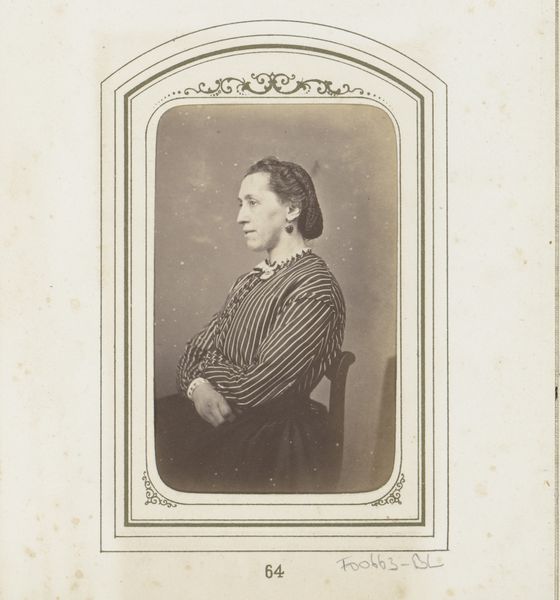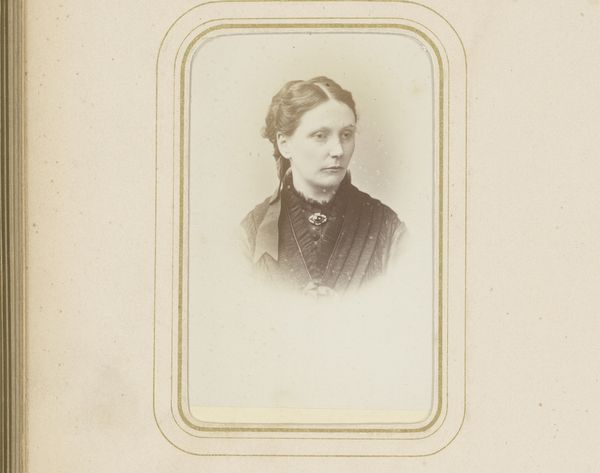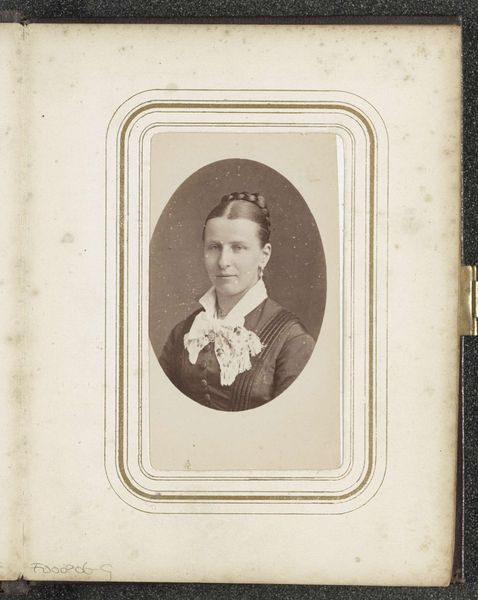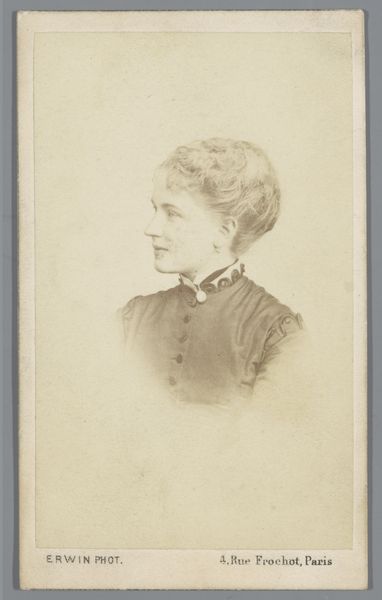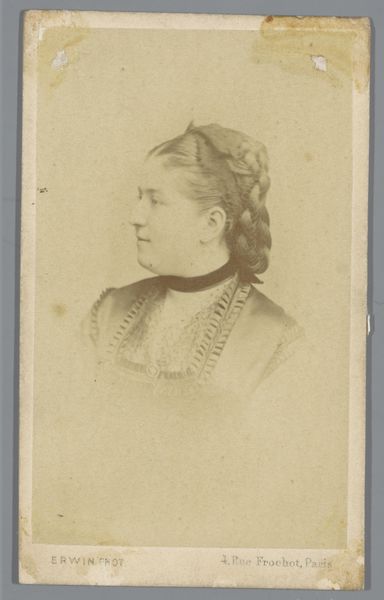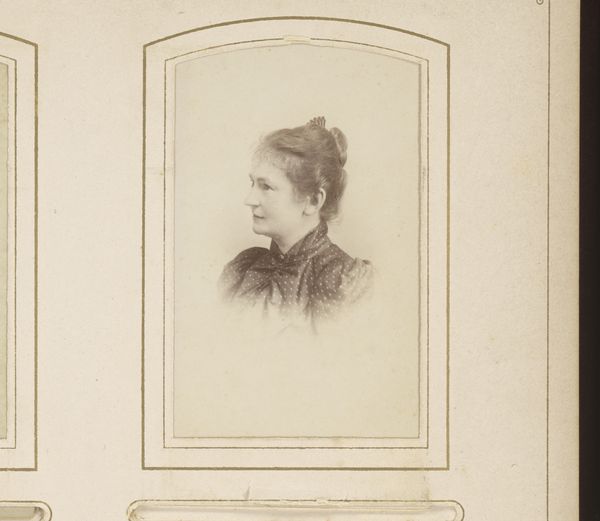
#
toned paper
#
light pencil work
#
pencil sketch
#
charcoal drawing
#
possibly oil pastel
#
charcoal art
#
coffee painting
#
underpainting
#
watercolour illustration
#
watercolor
Dimensions: height 85 mm, width 51 mm
Copyright: Rijks Museum: Open Domain
Editor: This is "Portret van een vrouw" by Wegner & Mottu, dating back to around 1860 to 1870. It's currently housed at the Rijksmuseum. Looking at it, I'm struck by how formally composed it is, and almost somber. What do you see in this piece? Curator: The formality definitely speaks to the conventions of portraiture in the mid-19th century, but beyond the individual, it is interesting to consider the broader social function of these portraits. These images circulated as markers of social status and family history within specific class circles. How might its display have affected contemporary audiences? Editor: So, it’s not just a picture of a woman, it’s communicating a message about who she is in society? Curator: Exactly. Think about the materials, too, the toned paper and the delicate light pencil work, or the "possibly oil pastel" textures. They create an atmosphere of quiet respectability, fitting the perceived role of women at the time, controlled and refined. What do you make of the blank space around her, like a window into her? Editor: I see. It emphasizes her face and makes the figure almost float in this ethereal space. Does the absence of background detail emphasize the sitter’s own interiority? Curator: It's certainly possible to interpret it that way. It prompts a discussion about the power of portraiture. By not offering clues beyond the figure, it makes us consider what details the artist chooses to include, and what we as viewers, then, fill in ourselves based on our own cultural biases. This portrait performs respectability in dress and form. Editor: That's really fascinating; I hadn't thought about the viewer's role in completing the portrait’s message. I see so much more here now than just a lady’s photograph. Curator: Precisely, art offers a mirror not just to its subjects but also to those who gaze upon it throughout time.
Comments
No comments
Be the first to comment and join the conversation on the ultimate creative platform.
